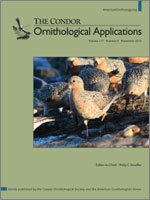Broad-scale population trends are often used to identify and list species of conservation concern and as baselines to surmise which recovery actions might arrest or reverse declines. It is therefore important that trends are quantified regionally, so that finer-scale assessments can be made about the plausible causes of declines and targeted conservation actions can be implemented. We estimated regional population trends for a grassland bird, the Bobolink (Dolichonyx oryzivorus), to compare with trends from provincial analyses used for risk assessment, to identify the regions contributing most substantially to population declines. We used 45 yr of count data from the North American Breeding Bird Survey, across 35 agricultural census divisions in southern Ontario, Canada, to develop spatially explicit hierarchical Bayesian models of regional population trends. Population trends were negative in 30 of 35 census divisions, 6 of which had 95% credibility intervals (CI) that did not include zero. In 34 of 35 census divisions, the CI included the provincial short-term recovery goal of a population trend of −1%. Between 1998 and 2011, corresponding to the time series used for provincial risk assessment, the CI for 3 of 21 negative trends did not include 0 or −1. Our results indicate that most regional trend estimates currently exceed the goal set out in the recovery strategy, insofar as they have been stable and not necessarily declining. This suggests a more optimistic picture of the state of Bobolink population trends than that obtained from analyses at broader spatial scales, which masked important regional variation. This result demonstrates the need for consideration of scale variance in trend estimation during risk assessment and management planning, and the application of spatially explicit trend estimation for small geographic areas to aid in this process.
How to translate text using browser tools
23 September 2015
Scalar considerations in population trend estimates: Implications for recovery strategy planning for species of conservation concern
Danielle M. Ethier,
Thomas D. Nudds
ACCESS THE FULL ARTICLE

The Condor
Vol. 117 • No. 4
November 2015
Vol. 117 • No. 4
November 2015
Bayesian
Bobolink
hierarchical modeling
management planning
policy development
population decline
spatially explicit




